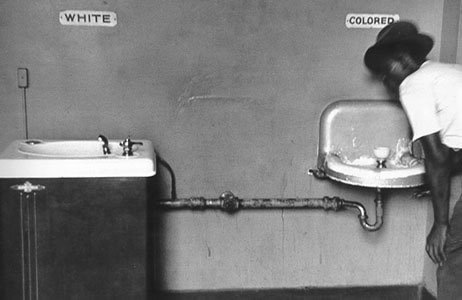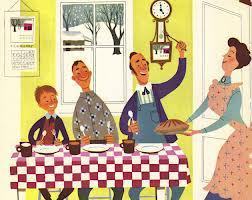What is Faction?
What is Faction?
No, I did not misspell the word fiction.
Faction: Webster
1: a party or group (as within a government) that is often contentious or self-seeking: clique
2: party spirit especially when marked by dissension.
I know, in literary terms, that tells the reader nothing.
Wikipedia, while not always the most reliable dictionary, often explains the definition of contemporary word usages that might not have become acceptable standards.
Faction: Wikipedia
1: Faction (literature), a type of historical novel rooted in fact.
A faction is a non-fiction novel.
The non-fiction novel is a literary genre which, broadly speaking, depicts real historical figures and actual events woven together with fictitious allegations and using the storytelling techniques of fiction. The non-fiction novel is an otherwise loosely defined and flexible genre. The genre is sometimes referred to as or faction, a portmanteau of “fact” and “fiction”.
Historical fiction, by definition, is a fictional story that is written about a time before the author’s birth.
All fiction, to some degree, is based on the author’s real life experiences as well as imagination and creativity. Fiction writers have often been called the world’s greatest liars.  A non-fiction novel can be written about a historical event or real events in a person’s life or in the character’s lives. A non-fiction novel is less of a lie.
A non-fiction novel can be written about a historical event or real events in a person’s life or in the character’s lives. A non-fiction novel is less of a lie.
In the 1970s non-fiction novels were all the rage. Since the ’70s, the non-fiction novel has somewhat fallen out of favor. However, forms such as the extended essay, the memoir, and the biography (and autobiography) can explore similar territory. I would like to see a resurgence in popularity of the non-fiction novel as I have always been fond of “true stories” and the storytelling experience.
Norman Mailer‘s Pulitzer Prize-winning Armies of the Night is perhaps the most critically appreciated non-fiction novel, a narrative which is split into a history and a novel, and which autobiographically recounts the March on the Pentagon in 1967 from the third person.
In contrast, Non-fiction (or nonfiction) is the form of any narrative, account, or other communicative work whose assertions and descriptions are understood to be empirically factual. Some non-fiction may include elements of unverified supposition, deduction, or imagination for the purpose of smoothing out a narrative, but the inclusion of open falsehoods would discredit it as a work of non-fiction. Some fiction may include non-fictional elements
The first line of my novel’s dedications and disclaimers page causes people to do a double take. This sentence states, “Inasmuch as this is a work of fiction based on a true story, references to real people, events, establishments, organizations or locales are intended only to provide the reader a sense of authenticity and are used fictitiously.” How can it be fiction and be true?
My novel, Red Clay and Roses, is a non-fiction novel. The novel is faction. It is a fictional account of a true story. It is not historical fiction, by definition, because much of it occurred after the time of my birth. (Hey, I am not THAT old!) It is; however, a historical account of a true story which is written in the style and manner of fiction. Facts regarding what actually occurred have been imaginatively woven into the story. The events in the story are true events and the people are real people. Embellishments came in the form of dialog and additional narrative concerning people who are no longer living or people who were telling me about other people (ie. I could not ask them what they were thinking when this or that event occurred or how they would have reacted. I only had the storyteller’s information as it was related to me either years ago or through a third party.)
It is not an essay, a memoir or an autobiography. It is a story about the lives of real people during a time in history when the world was going through very dramatic changes. During this time, blacks (or any people of color) and women in the South had much fewer opportunities and suffered serious oppressions. Non-white men were seen as the enemy. This was the general undertone, although there were individual exceptions. Unconstitutional laws were repealed, but it took society a long time to respect the new law and to enforce it due to generations of indoctrination. In many ways, we still are not there yet. Times were even more drastically different in the 1950-60s and early 1970s.
 Photo credit: Mr. Nussbaum.com
Photo credit: Mr. Nussbaum.com
Jim Crow Law not only allowed for discrimination, it encouraged the bigotry in society. Blacks could not dine in the same restaurants as whites, drink from the same water fountains, utilize public transportation the same way, and attend white schools, or frequent public libraries or swimming pools. It was not simply discouraged for blacks and whites to mingle, it was against the law. It is difficult to imagine such times as these now.
Women were expected to be domestic, to stay home and cook, clean sew and serve. Although WWII brought many women into the workforce, by the early fifties women were back into their traditional roles. Men had little involvement in the actual child-rearing process. Women also carried the brunt of reproductive rights and responsibilities, as they do for the most part today, Orders to pay child support were not enforced.
Although WWII brought many women into the workforce, by the early fifties women were back into their traditional roles. Men had little involvement in the actual child-rearing process. Women also carried the brunt of reproductive rights and responsibilities, as they do for the most part today, Orders to pay child support were not enforced.
The book is set in small town USA, in a very real place, where the events truly did occur. The dialog and story narrative have been fabricated to some extent to allow for the fictional sense and feel of the read. There are embellishments to the extent that much of the story was based on old interviews, the stories of a few people, and the diaries of one individual.
I don’t know if my mini research paper has clarified or confused the reader further, but it is the best explanation I can come up with for my literary work and its design. The paperback with a slight revision of the first chapter will be available soon. ~ S. K. Nicholls
Filed under: My Novels, Writing, Publishing, & Marketing Tagged: faction, fiction, history, Red Clay and Roses, S. K. Nicholls, true stories











